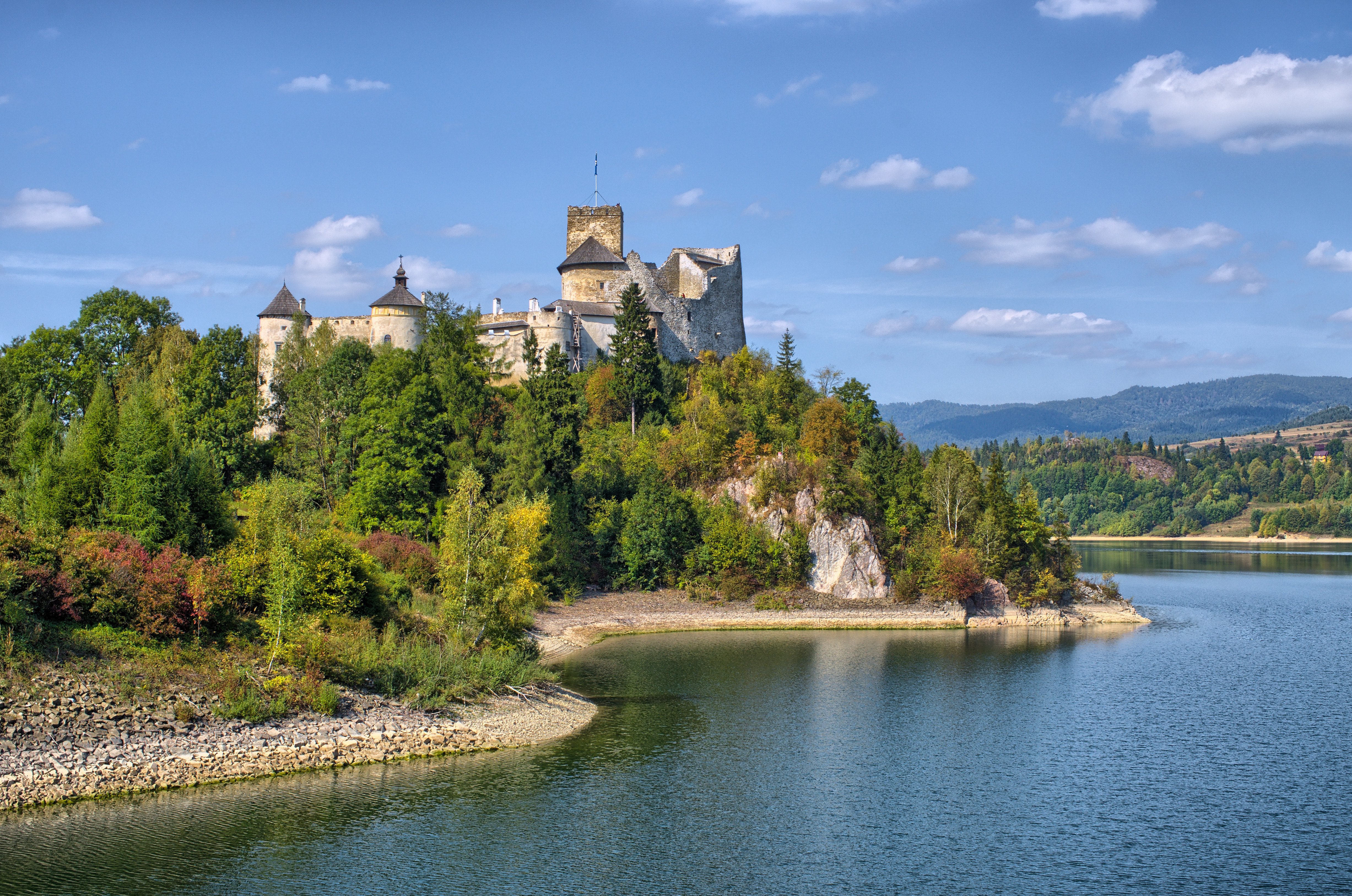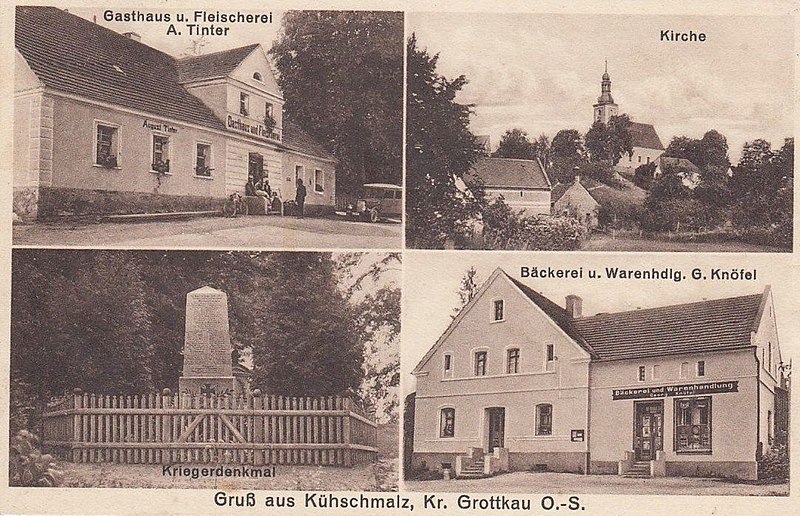Family
In 1904 the butcher Theodor Franz Wiegmann from Ober-Kühschmalz married my grandfather Valentin’s sister Hedvig and they moved to Kühschmalz in Silesia. Valentin moved to Kühschmalz too and they are to be found in the address books for Grottkau in the years 1929, 1936 and in the register for the address book for 1941. Their whereabouts after 1941 are so far not found.
Geography
Kobiela (German Kühschmalz) is a village in the administrative district of Gmina Grodków, within Brzeg County, Opole Voivodeship, in south-western Poland. It lies approximately 9 kilometres south-west of Grodków, 31 km south-west of Brzeg, and 46 km west of the regional capital Opole.
History
The place was first mentioned in 1289 with Hertwig, Schulze from "Kusmalz". In 1302 it is recorded as "Cobola seu Cuschmalz" (German: place where you get bad luck) and in 1303-04 it is included in the Registrum Wratislaviense as "Cobola sive Cuschmalz". In 1335 the St. George Church was mentioned. In 1343 "inferius Khwschmaltz" (Nieder-Kühschmalz) with two mills and "superius Khwschmaltz" (Ober-Kühschmalz) were bought by the city of Grottkau, with which in 1344 it came to the clerical principality of Neisse.
In the 1370s, a knight Vinzenz was heir to Kühschmalz. In 1407 and 1415 Kühschmalz was provided with interest by the clergy Nicholas. In 1425 Nieder-Kühschmalz consisted of 6½ Hufen and a barren tavern, Ober-Kühschmalz had two Hufen. A scholtisei (the head of a municipality) was not mentioned. 1579 each owned a village: Hans Dobenck, Karl Wiese and Pritzel Wiese. In 1635 a share of Kühschmalz passed to the Breslau Auxiliary Bishop Johann Balthasar Liesch von Hornau, who founded an entails commission from the Kühschmalz and Zindel estates for the Prince von Buchau family, who was related to him. A portion of Kühschmalz went to the episcopal chancellor Nikolaus Palmer.
After the First Silesian War in 1742, Kühschmalz and most of the Principality of Neisse fell to Prussia.
In 1810 the principality of Neisse was secularized. After the reorganization of the province of Silesia, the rural community Kühschmalz belonged to the district of Grottkau in the administrative district of Opole from 1816. In 1845 there was a castle, an outbuilding, a wine shop, a Catholic school, a Catholic parish church, a brewery, a distillery and 120 other houses in the village.
In the same year 747 people lived in Kühschmalz, seven of them Protestants. In 1855, 835 people lived in Ober- and Unterkühschmalz. In 1865 there were 31 gardener and 45 cottage industry jobs in the village. In 1874 the district of Kühschmalz was founded, which consisted of the rural communities Boitmannsdorf, Nieder Kühschmalz, Ober Kühschmalz and Rogau as well as the manor districts of the same name. In 1885 Ober- and Unterkühschmalz had 796 inhabitants.
In 1932, Klein Zindel was incorporated into the rural community of Kühschmalz. In 1933 738 people lived in Kühschmalz and 791 in 1939. Until the end of the war in 1945 the place belonged to the Grottkau district.
As a result of the Second World War, Kühschmalz fell under Polish administration in 1945, like most of Silesia. Subsequently, the place was renamed Kobiela and joined the Silesian Voivodeship. In 1950 it was incorporated into the Opole Voivodeship. In 1999 the place came to the newly founded Powiat Brzeski (Brieg district).


